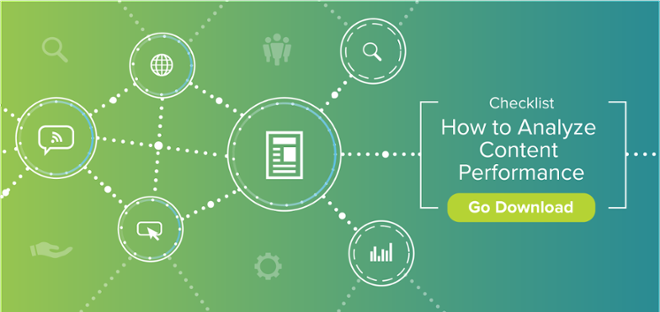Your B2B Marketing Strategy Roadmap

Table of Contents
The key to creating a successful marketing plan is a strategic, organized, actionable and repeatable marketing template. Humans work better with clear direction, and so will a marketing plan. While most marketing templates are for businesses that sell goods to consumers, this roadmap is for the sometimes convoluted, occasionally complex task of sparking interest within and amongst other businesses. While it’s not an easy task to convert leads from a business audience, it’s not an impossible one.
The SOAR™ System (Strategy, Organization, Actionable, Repeatable) was created to help you create a strategic marketing plan that will engage other businesses while generating leads and even better business relationships.
B2B (business-to-business) marketing refers to any marketing strategy or content that is geared towards a business or organization. Companies that sell products or services to other businesses or organizations (vs. consumers) typically use B2B marketing strategies. If your customer is another business, rather than individual consumers – then your marketing efforts are considered B2B.
First, lay the framework and clarify exactly whom you seek to serve, your goals and which of your existing assets can be harnessed for success. An easy way to begin this process is by doing a SWOT Analysis of your business to determine goals and overall trajectory. Then, you are able to pin down your specific buyer persona(s) to create an inbound marketing strategy that is targeted and effective.
SWOT Analysis
A SWOT analysis stands for Strengths, Weaknesses, Opportunities and Threats, all of which provide fair insights into how to optimize your marketing. It’s a strategic planning technique that puts your business into perspective and helps to identify areas for improvement to maximize opportunities, while also determining factors that might hinder your success. A SWOT analysis helps to determine which initiatives are worth executing, which challenges or opportunities to seek right away or what obstacles you might face.
 S.W.O.T. not to be confused with S.W.A.T.
S.W.O.T. not to be confused with S.W.A.T.
Define (or redefine) your Buyer Persona(s)
Everyone is trying to reach someone. Because of the competitive, technology-focused and fast-paced world we live in, your audience is larger than it’s ever been. So, in order to reach people effectively, marketers need to create an inbound strategy that is targeted and effective — a strategy that reaches the people who matter most for business success. The right buyer persona will give you a complete understanding of the foundation of your marketing efforts.
Lucky for you, buyer personas are our specialty. The definition of a buyer persona is simple — they’re a semi-fictional character that represents your ideal customer based on detailed research of your actual customers. Personas look deeper at your target audience to uncover the needs and wants of your ideal buyer.
 Let us help make it simple.
Let us help make it simple.
Buyer personas reflect your best customer relationships — relationships that generate the most revenue, with minimal opposition, over the longest period of time. Think about your best customers. How do they communicate? Are your goals aligned? These are the clients that you are trying to reflect with your personas. They are not your dream clients. They are your best clients. Want more info on building your buyer personas? Download the template.
Buyer personas can and should be utilized across your entire organization. Sales departments can use them to focus on how to best sell to qualified leads. Management can use them to decide where to properly allocate resources. It even benefits new hires during onboarding to understand the clients that they will soon be working with. By orienting your team around your ideal persona you assure that your entire organization is working together to reach the right client.
Setting goals and reaching said goals are two very different things. Whether you have short-term or long-term goals, using a strategy roadmap can help you get on your feet and manage the process, increasing the likelihood of sustained success.
Let us show you how to map out a strategy and develop the marketing actions necessary for execution. Every company needs a unique flight plan. This roadmap will help you clearly describe goals, apply focus and set a deadline for meeting them. To accomplish this, focus on creating SMART goals.
Write SMART goals
SMART Goals are Specific, Measurable, Attainable, Relevant and Time-Bound.
- Specific: Make your goals as short, concise and specific as possible. Ask yourself questions like “How?” “What?” and “Why?” If your goal is to improve your marketing, look at your key performance indicators (KPIs) and choose one you want to improve.
- Measurable: Make your goal measurable by asking: “How much?” “How many?” or “How will I know when it’s accomplished?”
- Attainable: Make SMART goals that are actually attainable and realistic for your team to accomplish.
- Relevant: A relevant goal could be something along the lines of, “increase distribution channels by X%” or “increase profit margin per unit by 5%” — a goal that matters to the company and is attainable by the company. Considering the relevancy of each goal is key to growth.
- Time-Bound: You need to ensure you have a timeline for meeting those goals. For example, if you decide your goal is to increase distribution channels, then you need to know when you will accomplish this in order to know when to begin work on a secondary goal to meet new demand.
Mind your KPIs
A key performance indicator measures how your company is performing directly related to key goals and objectives. Essentially, KPIs are measurable metrics that gauge overall performance over time.
There are various types of KPIs you can track:
- Customer Acquisition Cost (CAC)
- Lifetime Value of a Customer (LTV)
- Return on Investment (ROI)
- Return on Ad Spend (ROAS)
- Marketing Qualified Leads (MQL)
- Sales Qualified Leads (SQL)
Determine Content & Platforms
Content marketing has become one of the most powerful digital marketing strategies for businesses of all sizes and industries. However, when it comes down to developing your strategy, it can be difficult to decide which types of content marketing you should use to grow your business.
 Nobody puts the pressure on quite like Chef Ramsey, but don’t worry. We’re here to help.
Nobody puts the pressure on quite like Chef Ramsey, but don’t worry. We’re here to help.
As a marketer, there are many types of content at your disposal to reach your audience. In order to best capture their attention, you should utilize a variety of content including blogs, social posts, videos, podcasts, emails and digital ads. In order to see the best return on investment, your efforts need to be targeted to your buyer persona. A successful content strategy will attract your target audience at every stage of the funnel and keep them engaged, even after a purchase.
In order to determine the best type of content your persona will engage with, start by asking yourself some questions—
- Where is our buyer persona spending time online?
- What type of content does well on each platform?
- What does content look like for our brand?
- How will we manage content creation and publication? (Hint: you’ll want a CMS)
Determine your CMS/Automation Platform
A CMS, or Content Management System, is a software application that allows users to build and manage a website without having to code it from scratch or know how to code at all. With a CMS you can create, manage, modify and publish content in a user-friendly interface. The design and functionality of your site are customizable with downloadable or purchased templates and extensions. Sounds like a dream, right?
A CMS is made up of two core parts: a content management application (CMA) and a content delivery application (CDA). This allows you to make changes, install extensions and edit your site without all of the back-end hassles.
There are plenty of CMS options available, one is sure to fit your company’s unique needs. Depending on the cost, your budget (annual or monthly) and the features you want to utilize, you can identify which CMS you would like to utilize and at what level. A few common examples: Hubspot, WordPress, Mailchimp, and Pardot.
Pssst! Check out this article: 15 Best and Most Popular CMS Platforms in 2022 (Compared)
When choosing a CMS, you’ll need to understand the features each one offers, in comparison to the ROI it provides. However, you cannot fully determine your ROI without first setting your budget and executing a plan to make it happen.
Whether with your team or ours, it’s time to shift focus to execution and integration — creating a sustainable cycle of lead generation.
Set your budget and execute.
Determine what you need. Whether it be website redesign, rebranding, photo/video shoots, software or advertising, make sure to align your budget with your marketing goals. Ask yourself, “Does investing in X directly or indirectly push the company towards achieving one of its SMART goals?” From here, contract writers, book a shoot, set money aside for monthly advertising — execute the budget spend with SMART goals in mind.
Begin content creation and automation.
The content created for your company should be roughly 90% evergreen and 10% timely. Evergreen content has sustained interest over time and is always fresh — meaning no dates or time stamps. Evergreen content is crucial to a successful digital marketing strategy a company can sustain. This is where a Content Management System or Marketing Automation Platform comes into play.
Utilizing a CMS or MAP will help you automate your marketing and sales to generate more leads, close more deals, accurately measure your marketing success and get more sleep.
 As we like to say at Little Bird Marketing — put pressure on systems, not people!
As we like to say at Little Bird Marketing — put pressure on systems, not people!
Analyze
Use third-party analytics such as Hubspot Analytics, Google Analytics, SEM Rush or GTmetrix to gain insights and measure performance of the company’s marketing campaigns. Most of these offer built-in reports and dashboards. Track and break down your findings or reports by CRM and analyze your website’s performance. From there, shift your marketing efforts depending on revenue and audience trends.
Do you want to convert leads? If the answer is yes, then you’ll need to have a solid B2B marketing plan. This roadmap can help you to create and execute a solid strategy, but sometimes we just need more. That’s where the Little Bird Marketing SOAR™ System comes into play.
The SOAR™ System is designed to help busy leaders create a sustainable lead generation system within 90 days so they can remain confident in the growth of their company without losing focus on their other responsibilities. This is not a quick fix and it is a big commitment. We like to take it pretty seriously.
Can your internal marketing department and our SOAR System coexist? Absolutely!In the Do-It-Yourself Flight Plan, we provide the framework, structure and training needed to execute a successful annual marketing plan. |
What’s better – hiring 1 person with a few skills? Or hiring 1 team of experts with a plethora of skills?With the Done-For-You Flight Plan, our team becomes an extension of yours. In addition to the framework and structure of the DIY plan, this plan includes monthly execution of all marketing deliverables. |














